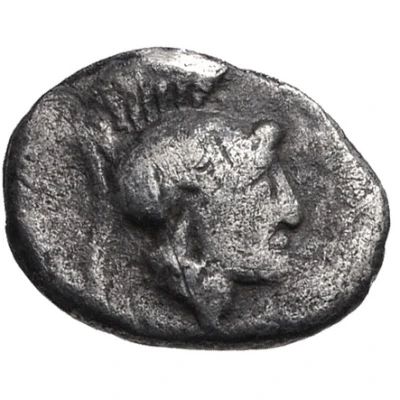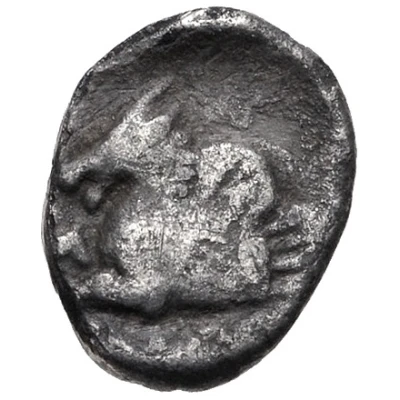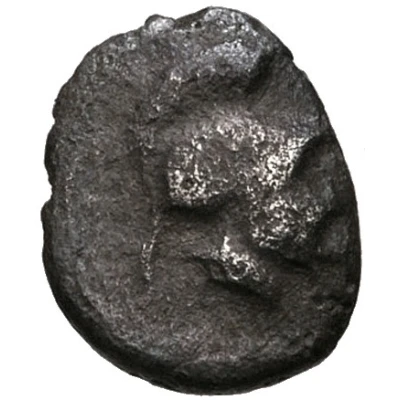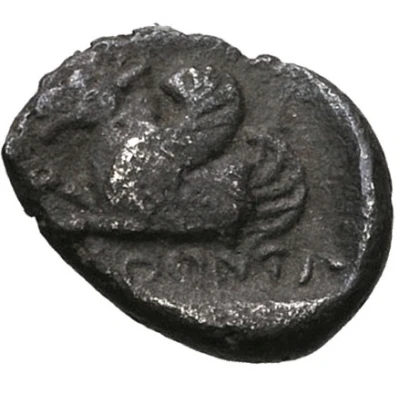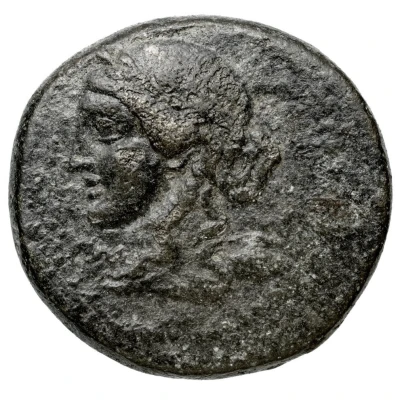
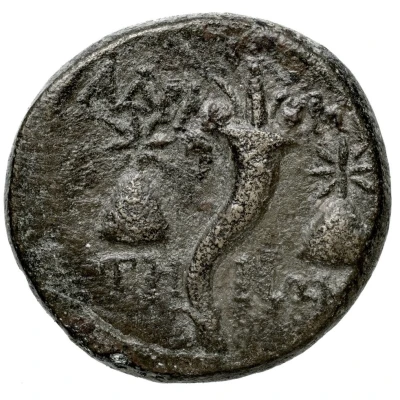

© Bibliothèque nationale de France
Tetrachalkon 119 BC - 63 BC
| Bronze | 5.8 g | 20 mm |
| Issuer | Adramyttion (Mysia) |
|---|---|
| King | Mithridates VI (Μιθριδάτης Εὐπάτωρ) (120 BC - 63 BC) |
| Type | Standard circulation coin |
| Years | 119 BC - 63 BC |
| Value | 1 Tetrachalkos = 4 Chalkon = ½ Obol = 1⁄12 Drachm |
| Currency | Drachm |
| Composition | Bronze |
| Weight | 5.8 g |
| Diameter | 20 mm |
| Shape | Round (irregular) |
| Technique | Hammered |
| Orientation | Variable alignment ↺ |
| Demonetized | Yes |
| Updated | 2024-10-10 |
| Numista | N#89199 |
|---|---|
| Rarity index | 91% |
Reverse
Cornucopiae between caps of the Dioskuroi
Script: Greek
Lettering:
ΑΔΡΑ
MYΤΗΝΩΝ
Translation: Adramyttion
Edge
Rough
Comment
A magistrate name may also appear on the Reverse.NIKO-LO/XOY - Nikolochos (photo courtesy of Pimmy)
Interesting fact
One interesting fact about the Tetrachalkon coin from Adramyttion (Mysia) is that it features a unique blend of Greek and Persian influences in its design. The coin's obverse side bears the image of a bearded king, likely representing the Seleucid king Antiochus VII, while the reverse side features a depiction of the Persian goddess Artemis Anaitis, highlighting the cultural exchange and synthesis that occurred during the Hellenistic period.
